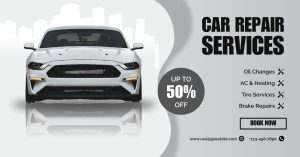Navigating the world of car insurance doesn’t have to be a long process. Changing your car insurance can be quite easy if you know how it works. Whether you want lower premiums, better coverage, or improved service, switching providers quickly and wisely can bring significant benefits without interrupting your protection.
Why Changing Car Insurance Can Be Easier Than You Think
The idea that changing car insurance is a bureaucratic nightmare is just a myth. With digital tools, online comparison sites, and simplified policy procedures, moving from one insurer to another can take less time than scheduling an oil change. It becomes a simple task when broken down into manageable steps.

When Speed Matters: Why Quick Policy Switches Are Essential
In some cases, time is crucial. A sudden premium increase, moving to another state, or buying a new vehicle may require an almost immediate switch in policies. Acting quickly ensures your vehicle stays legally covered and financially protected. Delaying could expose you to penalties, coverage gaps, or denied claims.
Understanding the Need for Change
Common Reasons Drivers Want to Change Car Insurance
Staying with the same car insurance provider for years may seem comfortable, but complacency often comes at a cost. Insurance premiums vary, policy terms change, and life situations shift—all of which can affect your coverage needs and financial responsibilities. Recognizing the right time to review your policy is not only smart, but also financially wise.
Many drivers are unaware that they are overpaying for outdated or unnecessary coverage. Events like moving, buying a new vehicle, or improving your driving record can all create the perfect opportunity to seek better rates or improved protection.
Sometimes, the need for change comes from dissatisfaction. This can be due to poor customer service, slow claims processing, or hidden fees. Other times, you might discover better options. Newer providers might offer more comprehensive coverage, loyalty bonuses, or bundling discounts that weren’t available when you first got your policy.
Understanding how to change car insurance starts with realizing that insurance is not a fixed commitment. It’s a tool that should change with your lifestyle and risk profile. Being proactive and open to change helps ensure your coverage meets your needs without emptying your wallet.
How Often Should You Review Your Auto Insurance?
A good rule of thumb is to review your policy each year. However, any major life or financial change should trigger a review. The market and personal circumstances change rapidly—your car insurance should keep up.

Signs It’s Time to Change Car Insurance Immediately
– Sudden premium increases without explanation
– Poor customer support during a claim
– Better deals found elsewhere
– Major lifestyle changes (new car, move, job change)
– Negative reviews or financial issues with your insurer
These signs should lead to immediate comparison shopping and a swift switch.
Before You Make the Switch
What to Know About Your Current Car Insurance Policy
Understanding your existing policy is essential before switching. Know your deductible, coverage limits, benefits, and any penalties for early cancellation. A close look at your declarations page can clarify what you’re paying for and what you’re not paying for.
How to Check for Cancellation Fees and Hidden Charges
Most policies can be canceled at any time without a fee, but some insurers do include pro-rata fees or short-rate penalties. Review the cancellation clause in your contract or contact a representative for clarification. Reading the fine print helps you avoid unexpected costs.
Understanding Your State’s Insurance Requirements
Every state in the U.S. has its auto insurance regulations, and understanding these local laws is essential before making any changes. Minimum liability coverage, personal injury protection, and uninsured motorist requirements can vary significantly from state to state. Ignoring these differences can result in legal penalties, suspended licenses, or uncovered claims—all serious issues.
Before you learn how to change car insurance, it’s important to assess what your state requires compared to what your current policy offers. Some states are “no-fault,” requiring specific personal injury coverage regardless of who is at fault in an accident. Others might have higher liability limits or mandates for medical payment coverage. These rules are mandatory; they are not optional.
Failing to comply with state laws when switching insurers can lead to gaps in coverage or denied claims. Therefore, when exploring how to change car insurance, your first step should always be checking state compliance.
Whether you’re moving out of state or simply updating your policy, ensure that your new coverage meets or exceeds the legal requirements. This careful planning keeps you protected and ensures that your change is lawful, smooth, and financially sound.
Getting Ready to Switch
Gathering the Right Information Before You Start
Collect your vehicle identification number (VIN), current policy details, driver’s license, and mileage records. Having this information ready makes comparing and applying for policies easier.
How to Compare Car Insurance Policies Fast
In today’s digital age, comparing car insurance policies doesn’t have to be a long process. With the right approach, you can sift through numerous options and quickly find the best plan. The key is to strike a balance between speed and detail.
Begin by gathering essential information, including vehicle details, your current policy, and your driving history. Use reliable comparison tools like Policygenius, The Zebra, or Compare.com to analyze this data. These platforms gather real-time quotes from various insurers, giving you a side-by-side view of coverage, deductibles, and premium costs.
Don’t get tempted solely by low prices. Look for depth in the policy, including liability limits, collision protection, roadside assistance, and rental reimbursement. Pay attention to the fine print, as exclusions and claim limitations can often be found there.
Understanding how to change car insurance involves knowing how to quickly assess value. Always check customer service ratings and claim satisfaction scores through third-party reviews, such as J.D. Power or AM Best. A slightly higher premium can often be worth it for better service and a smoother claims process.
When time is short, efficiency and thoroughness must work together. Mastering how to switch car insurance quickly depends on your ability to compare policies thoughtfully and efficiently.
Top Tools and Websites That Speed Up the Search
Finding the right auto insurance doesn’t require endless phone calls or hours spent reading the fine print. With a few clicks, you can compare leading providers and simplify your decision-making process. For anyone learning how to change car insurance, using digital tools is a real advantage.
Start with comparison platforms like The Zebra, Policygenius, and Gabi. These tools gather real-time quotes from various insurers based on your profile, allowing for quick comparisons. You enter your information once, and they take care of the rest. Some even review your existing policy to suggest better options.

For those focused on user reviews and insurer reputation, NerdWallet and ValuePenguin provide detailed analyses, customer ratings, and comparisons. These sites do more than show prices—they assess value.
Compare.com and Insurify offer tailored quotes based on unique lifestyle factors, such as commute distance or local crime rates. This detailed customization ensures more accurate pricing.
When it comes to understanding how to change car insurance efficiently, these digital tools reduce hassle and provide clarity. They transform what used to be a lengthy process into a quick, smart search, enabling drivers to make informed decisions in just minutes.
How to Choose the Right New Provider
Key Features to Look for in a New Car Insurance Plan
In addition to competitive rates, look for 24/7 customer support, a mobile-friendly claims process, flexible coverage, accident forgiveness, and bundling discounts. Stability and customer satisfaction ratings are also important; your insurer should be reliable when it matters.
Red Flags to Avoid When Shopping for a New Policy
Watch out for:
• Prices that seem too good to be true
• Vague terms and exclusions
• Poor customer service ratings
• Lack of transparency around claims
An insurer that is hard to reach during a crisis isn’t worth any savings.
How to Read the Fine Print Without Slowing Down
Skim intelligently. Focus on exclusions, cancellation terms, renewal conditions, and claims procedures. If anything is unclear, call a representative; getting quick clarification now can save you time and stress later.
Making the Switch Efficiently
Step-by-Step Process to Change Car Insurance Quickly
1. Compare and choose a new policy
2. Purchase the new plan with a future start date
3. Confirm the coverage start date matches your current policy’s end
4. Notify your current insurer about the cancellation
5. Print or download your new insurance ID card
If done correctly, this process can be completed in under an hour.
How to Cancel Your Old Policy Without Delays
Contact your current provider by phone or their app. Send a written cancellation request that includes your new policy’s start date. Ask for written confirmation for your records.
When to Time the Switch to Avoid Lapses in Coverage
Always make sure your new policy starts before or on the same day your old policy ends. Even a one-day gap can raise concerns for future insurers and leave you legally exposed.
Ensuring a Smooth Transition
How to Inform Your Lender or Leasing Company
Leased or financed vehicles often require specific coverage. Let your lender know about the change and share the updated declarations page to avoid breaking your loan agreement.
What to Do with Your New Insurance ID Cards
Print at least two copies—one for your glove compartment and one as a backup. Save a digital copy on your phone since many states accept electronic proof of insurance.
Tips to Avoid Coverage Gaps During the Switch
• Align the start and end dates carefully
• Confirm that your new insurer has activated the policy
• Check your email or portal for confirmation documents
• Call if you don’t receive your welcome packet right away
Common Mistakes to Avoid
Why You Shouldn’t Cancel Before You’re Covered
Never cancel first. If your new policy is delayed or rejected, you risk driving without insurance. Always secure new coverage before ending your current plan.
Overlooking Multi-Policy Discounts and Bundles
Bundling car insurance with home, renters, or life insurance can result in significant savings. Don’t rush into a decision without exploring what a bundle could offer.
Failing to Update DMV and Vehicle Records
Many states require insurers to notify the DMV electronically; however, it’s still advisable to verify this information. Failing to update your vehicle registration details can result in fines or a suspended license.
Special Circumstances to Consider
How to Change Car Insurance After a Move
State laws vary. Moving across state lines means you must update your policy. Address changes also affect how your premiums are calculated. Update your policy immediately after relocating.
Changing Car Insurance After Buying a New Car
Most policies automatically extend coverage to new vehicles for a short grace period. However, it’s vital to notify your insurer within that time frame to avoid gaps in coverage.
Switching Policies After an Accident or Claim
While it’s legal to switch after an accident, some insurers may consider you a high-risk driver. Be honest about any recent claims and be prepared for changes in your premium.
Saving Time and Money
How to Maximize Savings While Switching Fast
Switching car insurance quickly doesn’t mean giving up savings. Mastering how to do it efficiently can open up chances to lower your premiums without losing coverage. The key is to combine speed with smart strategy.
Start by gathering multiple quotes simultaneously using comparison websites, which make the search process easier. This saves time while revealing competitive rates. Consider raising your deductible slightly; this trade-off lowers your premium but means you’ll need to be prepared to cover more out-of-pocket costs if an incident occurs.
Take advantage of available discounts—many insurers offer rebates for safe driving, bundling multiple policies, installing anti-theft devices, or completing defensive driving courses. These often go unnoticed by rushed shoppers but can greatly reduce costs.
Avoid hasty decisions by ensuring that your new policy meets or exceeds your current coverage, which prevents costly gaps or shortcomings. Timing is crucial; aligning your new policy start date with your current policy’s expiration ensures that you have continuous protection and avoid penalties for any gaps.
By mastering how to change car insurance with both speed and care, you achieve the benefits of a quick transition and optimal savings. This balanced approach ensures that you don’t sacrifice quality for speed and keeps your expenses under control.
Loyalty vs. Better Rates: When to Let Go
Loyalty in car insurance can be a tricky concept. While long-term relationships with insurers may offer minor perks—such as accident forgiveness or renewal discounts—these benefits often don’t compare to what new customers receive. The reality is that many providers reserve their best rates for first-time policyholders, not loyal clients.
If your premiums have increased year after year despite a clean driving record, it may be time to reassess. Being sentimental shouldn’t overshadow smart financial choices. Knowing how to change car insurance means recognizing when loyalty costs you more than it should.
Conduct an annual review. Compare your current rate with quotes from other insurers offering the same or better coverage. You may find that switching could save you hundreds—or more—over the policy’s lifetime. Some companies even offer bonuses for switching or instant digital onboarding, making the process easy.
Loyalty should be earned, not taken for granted. If your current insurer no longer meets your needs or budget, it’s perfectly reasonable to move on. Knowing how to change car insurance empowers you to pursue the best protection without compromising on coverage or convenience.
Using an Agent vs. Going Online—Which Is Faster?
When it comes to switching policies quickly, the debate between using an insurance agent and going online is very relevant. The internet provides immediacy. With online comparison tools, real-time quotes, and digital forms, you can often get coverage in less than an hour. For many, this convenience is the fastest way to learn how to change car insurance.
However, agents offer something that algorithms can’t—personalized service. An experienced agent can effectively explain policy details, uncover hidden benefits, and tailor coverage to your specific needs. In complex situations—like households with multiple vehicles, teen drivers, or high-risk histories—an agent may save you hours of uncertainty.
That said, agents often rely on manual processes, which can slow down the switch. Online platforms work automatically, providing instant access and approvals.
If your situation is straightforward, online is likely faster. However, if you have unique needs or require customization, an agent’s expertise can help you make better decisions.
Ultimately, knowing how to change car insurance isn’t just about speed; it’s about finding the right balance. Select the method that best suits your urgency, complexity, and comfort level with fine print. Both routes can be quick; one fits you better.

Final Checks Before You Hit the Road
Double-Checking Coverage Details and Limits
Before finalizing any switch, it’s essential to double-check the coverage details and limits of your new policy. This crucial step ensures you aren’t unintentionally sacrificing protection for lower premiums. Understanding how to change car insurance involves more than just picking the cheapest option; it requires a careful assessment of what you’re getting.
Examine liability limits, collision and comprehensive coverage, uninsured motorist protection, and any add-ons like roadside assistance or rental reimbursement. Each element plays a vital role in protecting you from financial disaster after an accident. A policy that looks cheap but lacks essential coverage can put you at significant risk.
Pay attention to deductibles—the out-of-pocket costs you’ll have to cover before your insurance kicks in. Higher deductibles may lower premiums but increase immediate costs during claims.
Check your state’s minimum insurance requirements as a starting point, but think about whether those minimums adequately protect your assets and lifestyle. This evaluation requires care; rushing through this stage can lead to problems later on.
Mastering how to change car insurance means weighing cost against comprehensive protection. By thoroughly reviewing the specifics of your new policy, you protect yourself against surprises and ensure peace of mind on the road.
Verifying Billing Dates and Automatic Payments
Set reminders or automate payments to avoid late fees or cancellations. Confirm that your new insurer has the correct billing information on file.
Keeping a Record of the Switch for Future Reference
When switching your auto insurance, keeping detailed records is a crucial yet often ignored step. Documenting every part of the transition not only protects you from potential disputes but also streamlines future interactions with insurers and regulatory bodies. Knowing how to change car insurance well means creating a comprehensive record trail.
Start by keeping copies of cancellation confirmations from your old provider along with proof of your new policy’s start date. Emails, digital receipts, and printed policy declarations form the foundation of this record. These documents confirm your continuous coverage and serve as proof in case of billing errors or claim issues.
Also, note the dates of communication with agents or customer service representatives to enhance clarity. Document details of conversations, including names and time stamps, to strengthen your position in any disagreements.
In the digital age, consider backing up records on secure cloud services to ensure easy access when needed. This proactive approach reduces administrative hassles and enhances your legal protection.
By carefully keeping a record of the switch, you make a potentially complicated process organized and manageable. Knowing how to change car insurance is not just about picking the best policy; it’s also about ensuring every step is documented clearly and thoughtfully.
Conclusion
Why Quick Doesn’t Mean Careless
Changing car insurance quickly doesn’t mean rushing impulsively. A smooth transition comes from planning, timing, and smart decision-making. With the right approach, you can switch seamlessly without sacrificing your protection.
The Freedom of a Fast, Smart Insurance Switch
There’s confidence in knowing you’re not stuck with a bad policy. Switching car insurance promptly means reclaiming control over your expenses, coverage, and peace of mind.
FAQs
Can I switch car insurance anytime?
Yes. Most providers let policyholders switch at any time. Just make sure there’s no gap in coverage during the switch.
Will I get a refund from my old insurance?
If you’ve paid in advance, you’ll usually receive a prorated refund for the unused part of your premium.
How do I switch if I have an open claim?
You can switch, but your current insurer will still manage the claim. Ensure the change doesn’t disrupt the claims process.
Does switching affect my credit score?
No. Insurance inquiries are considered soft checks and do not affect your credit score.
Can I change car insurance the same day I buy a car?
Absolutely. Most dealerships require proof of insurance before you can drive away. You can purchase a policy in just a few minutes online.
